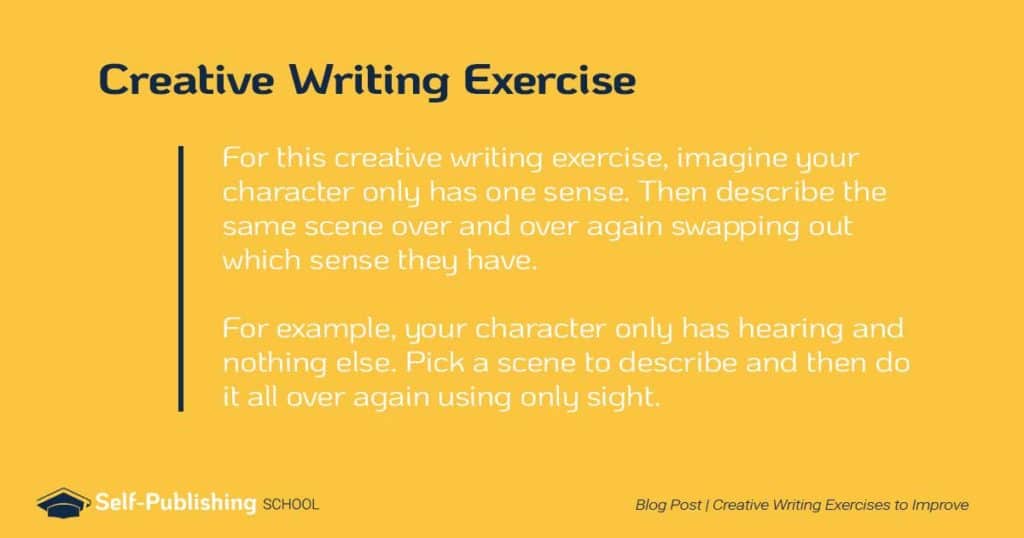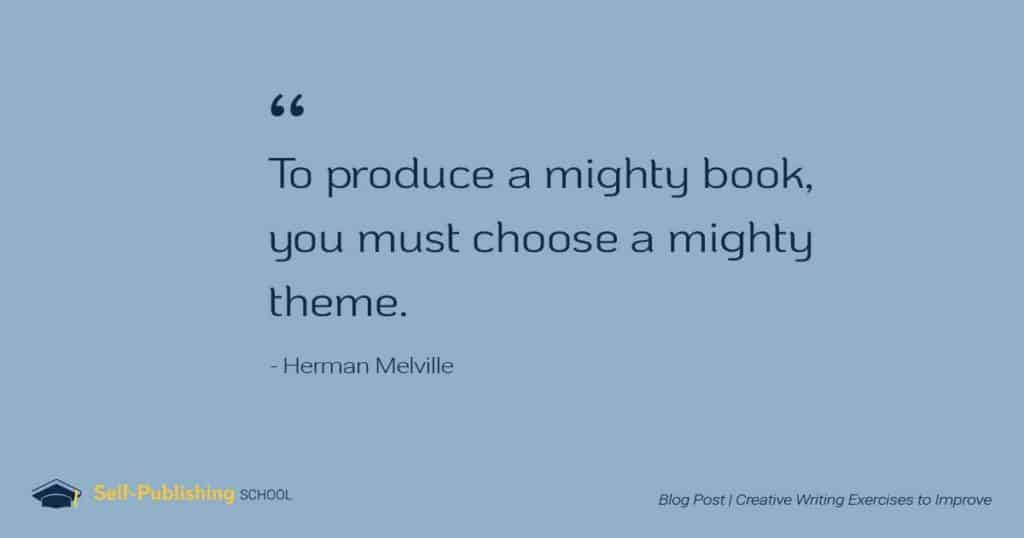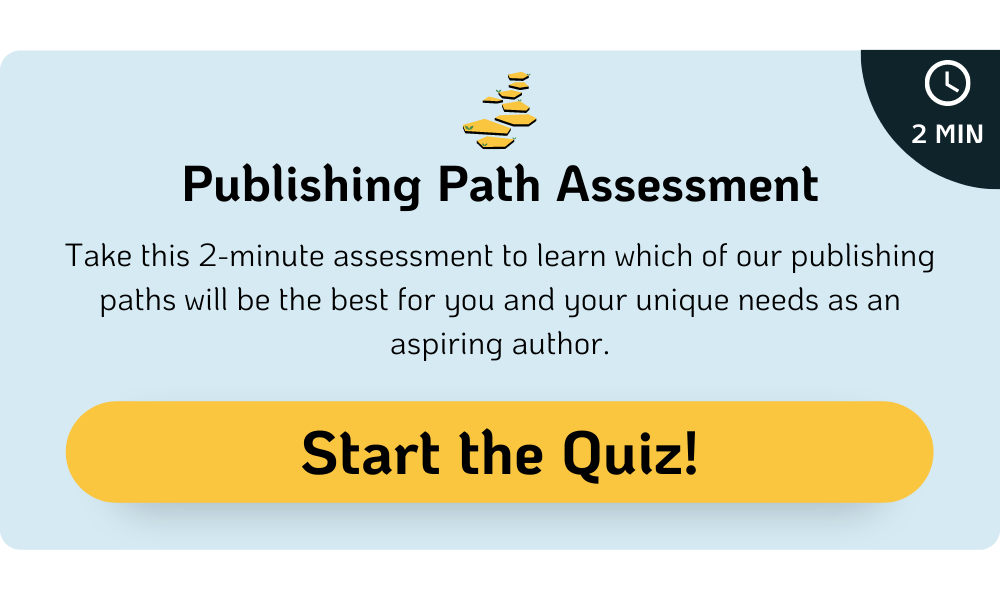Creative writing is one of those skills you can eternally get better at, but often suck at when you start…
I’ve been there. I’ve so been there.
Now, we’re not saying your creative writing is bad necessarily, but just that if you want to continue to push yourself in this industry, you’ll need some work since literature is more competitive now than it ever has been.
You might not like to face that truth, but it is indeed a truth everyone who wants to write and publish successfully has to face.
I’ll go into more detail about that in a little bit but every writer out there needs some writing tips to help them get better.
And one of the best ways to get better at creative writing is to first learn and understand the craft of it, and then challenge yourself by completing writing exercises.
Because when your time comes to publish, you want a high-quality final product in order to actually sell your book and acquire raving fans.
Here’s what you’ll learn about creative writing:
- What is creative writing?
- Creative writing topics
- Elements of creative writing
- Examples of creative writing
- 9 powerful creative writing exercises
What is Creative Writing?
Creative writing is a form of writing where creativity is at the forefront of its purpose through using imagination, creativity, and innovation in order to tell a story through strong written visuals with an emotional impact, like in poetry writing, short story writing, novel writing, and more.
It’s often seen as the opposite of journalistic or academic writing.
When it comes to writing, there are many different types. As you already know, all writing does not read in the same way.
Creative writing uses senses and emotions in order to create a strong visual in the reader’s mind whereas other forms of writing typically only leave the reader with facts and information instead of emotional intrigue.
It can be a book series or a single installation, the factors that make up creative writing have more to do with how it sits with the reader artistically.
What are the Elements of Creative Writing?
In order to get better at creative writing, you have to understand the elements of what makes writing a book great.
You can’t build a car engine without understanding how each part plays a role, right…?
That’s the same case with writing.
And just a note, this is all stuff we cover, and you get to talk about 1-on-1 with your coach when you join Self-Publishing School.
Here are the elements that make up creative writing and why each is just as important as the other.
Unique Plot
What differentiates creative writing and other forms of writing the most is the fact that the former always has a plot of some sort – and a unique one.
Yes, remakes are also considered creative writing, however, most creative writers create their own plot formed by their own unique ideas. Without having a plot, there’s no story.
And without a story, you’re really just writing facts on paper, much like a journalist. Learn how to plot your novel and you’ll open up the possibility of writing at a higher level without the need to find your story as much.
Character development
Characters are necessary for creative writing. While you can certainly write a book creatively using the second person point of view (which I’ll cover below), you still have to develop the character in order to tell the story.
Character development can be defined as the uncovering of who a character is and how they change throughout the duration of your story. From start to end, readers should be able to understand your main characters deeply.
Underlying Theme
Almost every story out there has an underlying theme or message – even if the author didn’t necessarily intend for it to. But creative writing needs that theme or message in order to be complete.
That’s part of the beauty of this form of art. By telling a story, you can also teach lessons.
Visual Descriptions
When you’re reading a newspaper, you don’t often read paragraphs of descriptions depicting the surrounding areas of where the events took place. Visual descriptions are largely saved for creative writing.
You need them in order to help the reader understand what the surroundings of the characters look like.
Show don’t tell writing pulls readers in and allows them to imagine themselves in the characters’ shoes – which is the reason people read.
Point of View
There are a few points of views you can write in. That being said, the two that are most common in creative writing are first person and third person.
- First Person – In this point of view, the narrator is actually the main character. This means that you will read passages including, “I” and understand that it is the main character narrating the story.
- Second Person – Most often, this point of view isn’t used in creative writing, but rather instructional writing – like this blog post. When you see the word “you” and the narrator is speaking directly to you, it’s second person point of view.
- Third Person – Within this point of view are a few different variations. You have third person limited, third person multiple, and third person omniscient. The first is what you typically find.
- Third person limited’s narrator uses “he/she/they” when speaking about the character you’re following. They know that character’s inner thoughts and feelings but nobody else’s. It’s much like first person, but instead of the character telling the story, a narrator takes their place.
- Third person multiple is the same as limited except that the narrator now knows the inner thoughts and feelings of several characters.
- The last, third person omniscient, is when the narrator still uses “he/she/they” but has all of the knowledge. They know everything about everyone.
While non-creative writing can have dialogue (like in interviews), that dialogue is not used in the same way as it is in creative writing. Creative writing (aside from silent films) requires dialogue to support the story.
Your characters should interact with one another in order to further the plot and develop each other more.
Imaginative Language
Part of what makes creative writing creative is the way you choose to craft the vision in your mind.
And that means creative writing uses more anecdotes, metaphors, similes, figures of speech, and other figurative language in order to paint a vivid image in the reader’s mind.
Emotional Appeal
All writing can have emotional appeal. However, it’s the entire goal of creative writing. Your job as a writer is to make people feel how you want them to by telling them a story.
Creative Writing Examples
Since creative writing covers such a wide variety of writing, we wanted to break down the different types of creative writing out there to help you make sense of it. You may know that novels are considered creative writing, but what about memoirs?
Here are examples of creative writing:
- Novels
- Short stories
- Poetry
- Plays
- Memoirs
- TV show scripts
- Movie scripts
- Songs
- Speeches
9 Creative Writing Exercises to Improve Your Writing
Writing is just like any other skill. You have to work at it in order to get better.
It’s also much like other skills because the more you do it, the stronger you become in it. That’s why exercising your creative writing skills is so important.
How do you start creative writing?
The best authors out there, including Stephen King, recommend writing something every single day. These writing exercises will help you accomplish that and improve your talent immensely.
#1 – Describe your day with creative writing
This is one of my favorite little exercises to keep my writing sharp and in shape.
Just like with missing gym sessions, the less you write, the more of that skill you lose. Hannah Lee Kidder, a very talented author and Youtuber, gave me this writing exercise and I have used it many times.
Creative Writing Exercise:
All you have to do is sit down and describe your day – starting with waking up – as if you were writing it about another person. Use your creative writing skills to bring life to even the dullest moments, like showering or brushing your teeth.
#2 – Description depiction
If you’re someone who struggles with writing descriptions or you just want to get better in general, this exercise will help you do just that – and quickly.
In order to improve your descriptions, you have to write them with a specific intention.
With this exercise, the goal is to write your description with the goal of showing the reader as much as you can about your character without ever mentioning them at all.
#3 – Edit your old writing
Believe it or not, editing does count as writing and can actually sharpen those creative writing skill more than you think.
It can be a little scary to pull up a story you wrote last week or even two years ago and tear it apart. But that’s exactly what I want you to do.
Check out this video of me editing my old writing in order to replace weak verbs with stronger, better ones to get a taste of what this can look like and how it can help you get better.
#4 – Voice variations
One of my favorite parts of writing is giving unique voices to each character, using multiple points of view. I believe that’s what truly brings them to life.
Their dialogue has the power to pull readers in, or push them out of the book completely.
Obviously, you want the former.
During this creative writing exercise, your focus will be to pick 4 different emotional states and write dialogue examples of how your character feels and interprets those feelings.
Creative Writing Exercise:
For this one, craft a character in your mind. It can be one you already created or a completely new one.
Choose your 4 emotional states – and get creative. You can choose sadness, anger, happiness, and excitement BUT you can also go a bit further and choose to use drunk, flirty, terrified, and eager.
After you have 4 emotional states, write one page of each using dialogue and narrative your character would use.
#5 – Single senses
Creating strong visuals is one of the most powerful ways to become a great creative writer. In fact, practicing this will help you craft books that really hook readers.
This exercise’s goal is to help you develop writing the senses in ways that not only make sense, but are also imaginative and unique.

#6 – Dialogue destruction
During this exercise, you will learn a lot about how to write a scene using entirely dialogue.
Now, this isn’t something you’ll always do in your writing, but it’s very important to know how to move a scene forward using dialogue if you need to.
This will also help you understand how to show and not tell in creative writing.
Creative Writing Exercise:
To start, choose a scene you wrote previously that has little to no dialogue, but is still very important.
Next, rewrite the entire thing using dialogue (including dialogue tags and body language descriptions). You will quickly become better at using dialogue to show and not tell.
#7 – Tell the origin story of the Tooth Fairy
This writing exercise will really help you think creatively about something a large part of the world knows about.
However, you have to think of a very unique, interesting way of presenting this common idea. The purpose of this is to help you dig deeper within your own story and plot in order to come up with the very best, most unique ideas – because that is what will stand out in your book.
Creative Writing Exercise:
Begin this story like you would any other. Develop who the very first Tooth Fairy is and understand their character. Then, start creating a backstory that coincides with how they ended up becoming the tooth fairy.
Write this in full, ending with the Tooth Fairy taking their first tooth.
#8 – Thematic attic
This is a fun one! The idea behind this creative writing exercise is to focus on interpreting themes through story.
Since all creative writing has an underlying theme behind it, it’s really important for you to be able to accurately depict that theme throughout the story you’re telling.

Otherwise, it can get lost. Not knowing the theme can often leave readers feeling unsatisfied – and rightfully so.
Creative Writing Exercise:
For this exercise, pick an overarching theme you want to focus on. This can be anything from equality to the difference between right and wrong.
Next, craft a short story with the setting being and do your best to make sure that theme shines through
Get creative! Your attic can even contain a portal to another dimension if you really want it to.
#9 – Break language barriers
This isn’t quite what you think it is. So no, we will not be creating new languages with this exercise.
Instead, we’ll be working on using unique language to describe very common, everyday occurrences and experiences.
One of the beauties of creative writing is that you have the power to change the way someone sees the world. You can make it more appealing and special to them – if you know how.
This exercise will help you develop the skill of using a unique narrative within your story.
Creative Writing Exercise:
In this creative writing exercise, you’ll start by reading. You can read a new book or even some of your old writing.
Highlight or copy sentences or paragraphs you think are very common experiences that most everyone in the world knows of. For example: the sunset, brushing your teeth, looking up at the sky.
Your job is to rewrite these experiences in the most unique way you can using visuals that you don’t normally see in writing.<
Here’s an example:
BEFORE – The sun set beyond the trees.
AFTER – The trees tucked the sun in for the night.
